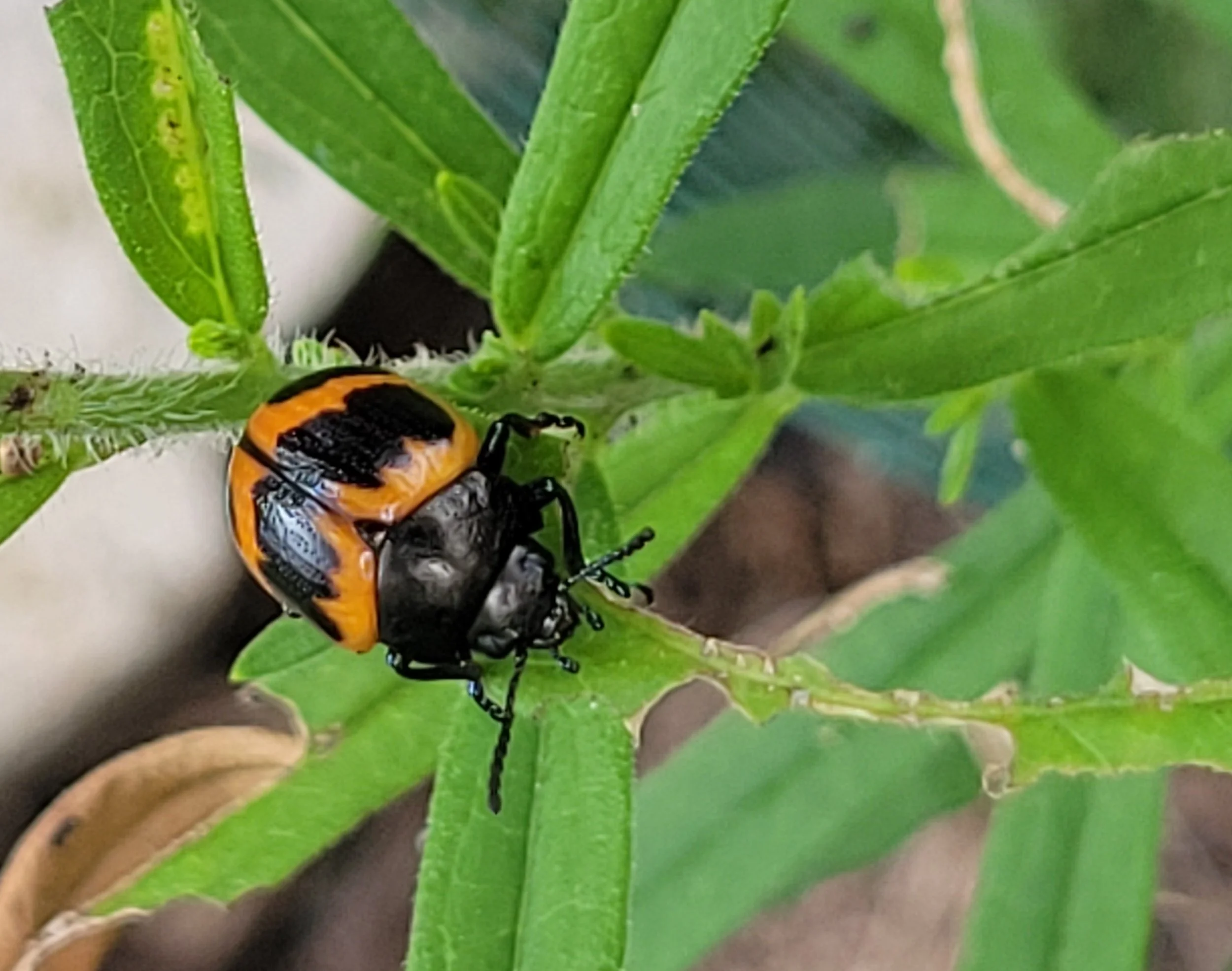Photo: Fiery Skipper on Blue Mistflower, Libby Lyons
Elizabeth “Libby” Lyons
I was thrilled last month when our eighth-of-an-acre property was certified by ASNV’s Audubon at Home program as a “Wildlife Sanctuary.” This means that I had seen at least 10 “sanctuary species” on our property and signed the “Healthy Yard Pledge” to do things such as increase native plants, reduce our lawn size, remove invasive species, reduce pesticides and fertilizers, make our windows bird-safe, and keep our cats indoors.
Cooper’s Hawk, Libby Lyons
I like AAH’s “Let the animals decide” approach because the wildlife, by its presence, signals that the property is good habitat! Not surprisingly, many of my “sanctuary species” were birds. With good tree cover in the neighborhood and several birdfeeders, we see a wealth of birdlife – wrens, warblers, woodpeckers, waxwings, and more. This year we saw even more hummingbirds and goldfinches, which were attracted to our native plants. And our feeders, because they attract plump mourning doves, also brought in a Cooper’s Hawk! More than once we found a ghoulish splash of dove feathers under the feeders. But the Cooper’s Hawk counts as a “sanctuary species,” and no habitat is complete without predators (such as hawks) as well as prey (such as mourning doves).
Eligible “sanctuary species” are not just birds. Many are insects on which birds rely for food and which are wildlife worthy of protection in their own right. Among the insect “sanctuary species” that I counted were loads of monarch and American Lady butterflies, small iridescent native bees, several types of bumblebees, lady beetles, and lightning bugs.
Swamp Milkweed Leaf Beetle on Butterfly Weed, Libby Lyons
Fiery Skipper on Blue Mistflower, Libby Lyons
Why did the diversity of insects shoot up this summer? Insects thrive where native plants abound and I had just increased the number and variety of native plants in my yard. I’m fortunate to have friends far ahead of me on this native yard journey who graciously dug up dozens of plants (e.g., asters, mountain mint, violet, jewelweed, and wild ginger) that I transplanted into my gardens. With my Plant NOVA Natives’ guide to Native Plants for Northern Virginia in hand, I also purchased beebalm, butterfly weed, Joe-pyeweed, cardinal flower, and red chokeberry. I removed invasive species that offer little wildlife benefit and can do serious harm: a non-native Wisteria was replaced with a native coral honeysuckle and out came the English Ivy (which climbs and kills trees, creating a safety hazard) and the Nandina (whose berries are poisonous to waxwings), although not without a fight, as my son can attest!
This experience rekindled my love of gardening, but now I garden for nature, as well as for aesthetic pleasure. I found the whole AAH process simple and I saw wildlife impact within months. This gives me hope that small private landowners can make a difference. And my years of teaching ecology tell me that larger patches of such wildlife habitat should have a bigger impact and be more resilient. So I am spreading the word – and the plants! I collected seeds from two dozen of my native species and will overwinter the seeds outside so they germinate in the spring, when I will share the plants with my neighbors. I alerted a new neighbor to the county’s native tree give-away and we both planted saplings. I started working with the church next door. They are keen to try the AAH approach as a neighborly act that aligns with their faith’s environmental stewardship. They recently had a workday at the church, and we removed invasive plants and identified native species that they can save and transplant. I foresee that these efforts, focused in a cluster, will transform more of the neighborhood into a healthy sanctuary for humans and wildlife for years to come. And I hope we can encourage more clusters of AAH Wildlife Sanctuaries across Northern Virginia!




